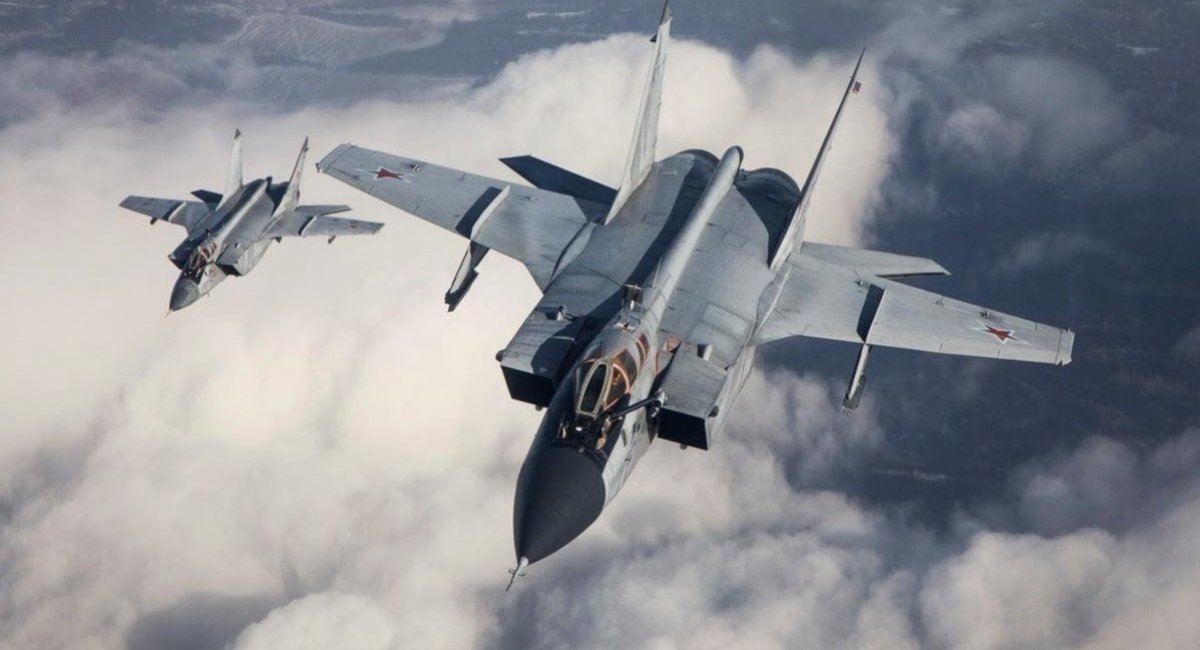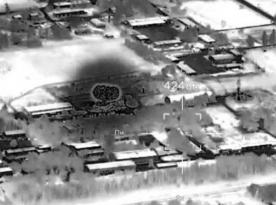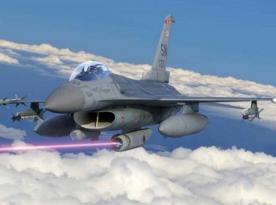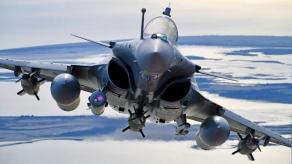November 10th air raid alerts over the entire Ukraine lasted for over 3.5 hours. The reason is that russian forces had raised their MiG-31K aircraft in the air. This type of jet is the only carrier of Kh-47 Kinzhal air-launched "hypersonic" ballistic missiles, and so the threat of an aerial strike on Ukraine remains from the very takeoff until all of them are confirmed to return to the base.
Yesterday, however, they had a particular reason to stay midair for so long. According to the Spokesperson of the Ukrainian Air Force Yurii Ihnat, the MiG-31s were working out aerial refueling; it is a new pattern of behavior compared to the previous sorties involving this type of aircraft.
Read more: The UK Defense Intelligence Analyzed russia’s Decision to Patrol in the Eastern Black Sea Using the MiG-31I Interceptor with Kinzhal Missiles
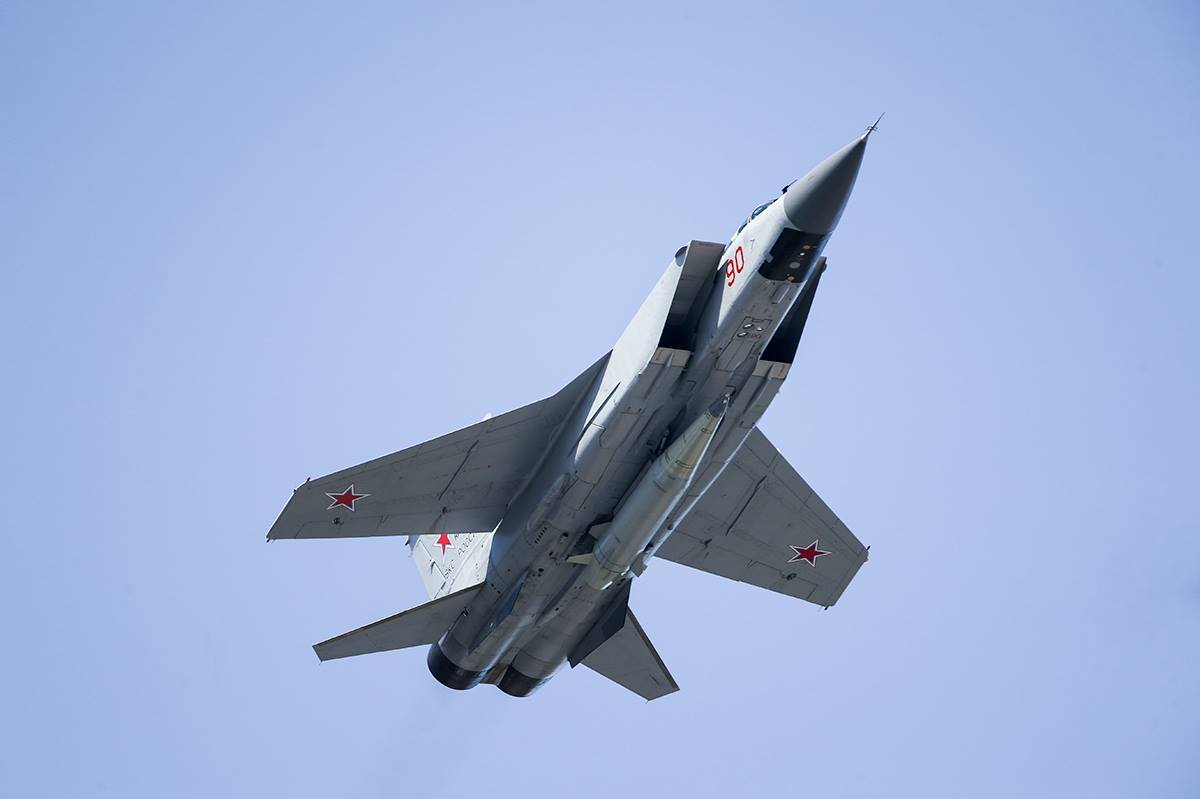
Ihnat added that initially, Ukrainian Air Force recorded 20-minute flights because russian pilots were only practicing takeoff and landing, then for the past six months their flights extended to 1.5 hours until they ran out of fuel. With the employment of aerial refueling, they can double the time they can stay up in the sky, he said.
The amount of time that the russian MiG-31K can spend without landing is an interesting topic to dive into because regardless of the potential capacity provided by in-flight refueling, there is always some limit for each type of aircraft, be it imposed by the hardware or by human abilities.
As for the equipment, we should note that the exact specifications of the MiG-31K remain undisclosed by the russian military. For that reason, let's proceed from the specs of the basic MiG-31. Official documents from the russian Ministry of Defense state that the maximum flight duration for this type of aircraft is 3.6 hours when equipped with drop tanks with additional fuel, or 7 hours with aerial refueling.
| Specifications of the MiG-31 interceptor aircraft, as declared in russian MoD documentation: | |
|---|---|
| Crew | 2 people |
| D-30F6 turbofan engines | 2 units |
| Engine thrust | 2x 15,500 kgf |
| Effective altitude ceiling | 20,600 m |
| Transfer range, with drop tanks | 3,300 |
| Effective range, w/o drop tanks | 2,500 |
| Maximum flight duration: | |
| 3.6 hours |
| 7.0 hours |
| Maximum G-force | >5 units |
| Combat engagement range: | |
| 720 km |
| 1,000 km |
| 1,400 km |
The figures, though, raise doubts. In 2016, the russian defense ministry announced a record-breaking flight performed by several MiG-31BM aircraft without landing between the Krasnoyarsk Krai and the Astrakhan Oblast. Apparently, it was a two-way trip as the declared total distance was 8,000 km. They finished the route in 7 hours and 4 minutes, and it was a new record for not just MiG-31 in russia but for all this aircraft family throughout its history in service.
An interesting detail is that for this 7-hour flight, the jets needed three refuelings from Il-78 tankers. Twice above the Perm Krai, in the middle of the route, and once again over the Novosibirsk Oblast. One Il-78 can fill six MiG-31s having two drop tanks each.
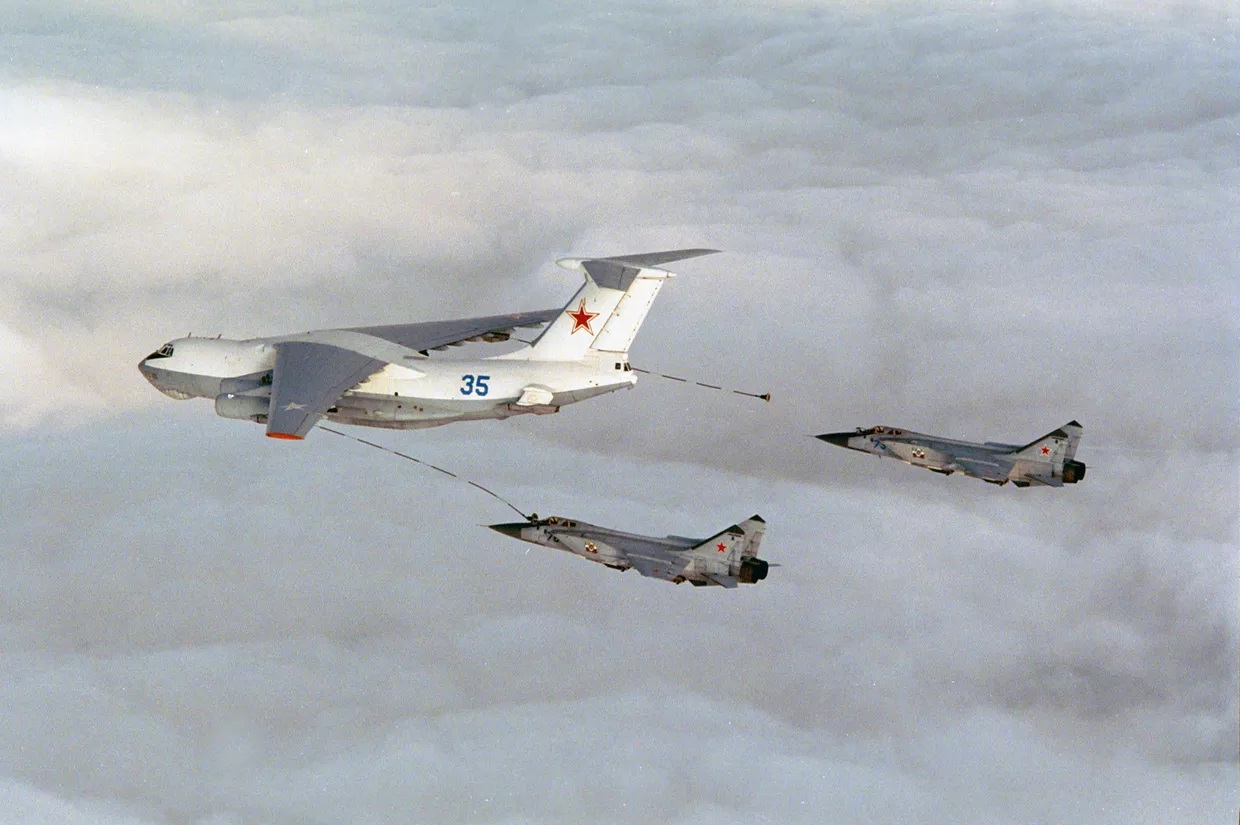
This episode indicates that the real maximum flight range and duration are lower than declared "on paper." Of course, the performance in this particular case has a multitude of explanations, including such factors as payload weight and flight mode which directly affect the aircraft's endurance. The average speed of 1,140 km/h during the record-breaking journey instead of the standard cruising speed of 950 km/h points to that possibility as well.
In any case, the 7-hour flight is the longest this type of aircraft has ever shown, thus very unlikely to be repeated for the sake of loitering near Ukraine with Kh-47 Kinzhal missiles on board. Speaking of Kinzhal, a launch of this weapon requires climbing to high altitudes and utilizing an afterburner which swiftly burns all the fuel away.
We should not discount the amount of pressure falling on pilots' shoulders during flights this long, and keep in mind the low reliability of the D-30F6 engine that already led to at least one russian MiG-31K burnt during an attempt to take off for another sortie near the northern border of Ukraine.
Overall, there were at least six confirmed instances when russia lost its MiG-31Ks out of combat. All things considered, we can now understand why usually a MiG-31K spends no longer than 2 to 4 hours in the air at a time.
Read more: Sixth russian MiG-31 Crashed Since 2022, This Time in Kamchatka



